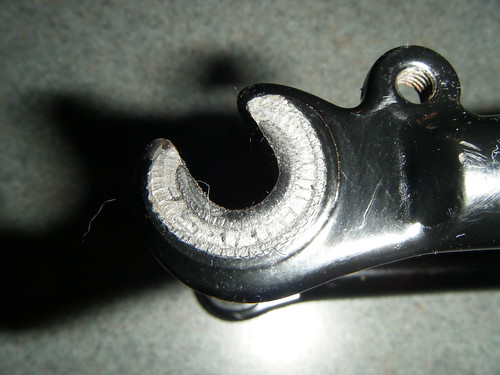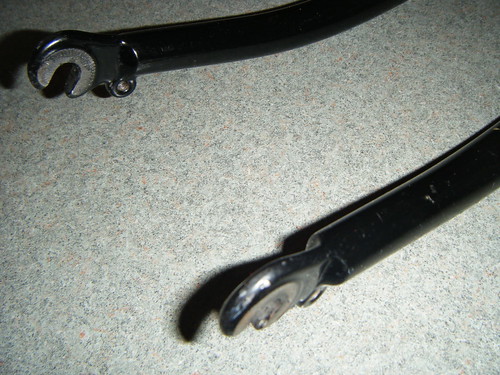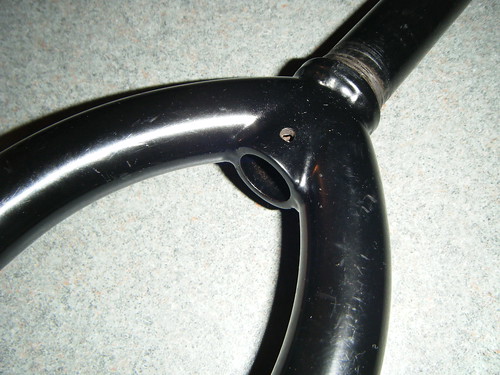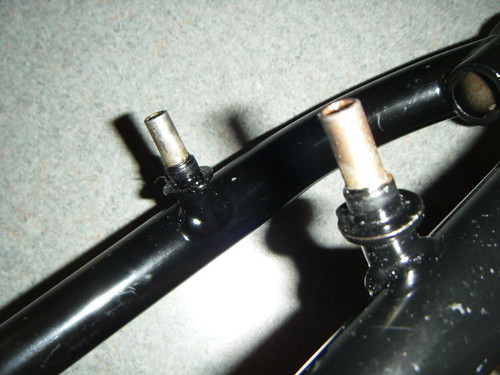Hey AB - saw your PM but will address your question here - Just got back from a whirlwind tour of Korea and China and saw a cool velodrome in Changwon, Korea
OK the unicrown gets its name from the fact that the fork tubes are drawn and then bent into such a shape that the top of each blade forms the crown of the fork. Traditionally, steel bicycle forks have been built by brazing fork blades to a cast part called the "crown" with also is brazed to the steerer tube.
The FCC "box crown" fork has a crown that was simply made from a piece of 1" square 4130 tube that was machined to accept the steerer tube and the fork blades which were TIG welded to the crown. We used Columbus road bike steerer tubes which had rifling in the inside at the crown area to provide extra torsional rigidity. We used Tange Prestige road bike fork blades which were very light. The Tange blades presented a challenge for TIG welding since the chrome-moly was not optimized for welding and tended to undercut if the proper techniques were not followed by the welder. These forks were very light compared to the unicrown, but not as durable. After receiving some back that had developed cracks at the back of the blade / crown junction, we added gussets to improve the strength of that area.
The FCC YO fork was made from mitered tubes which formed the "crown" of the fork. The "blades" were 4130 tubes and I don't remember if those tubes were True Temper butted tubes or if they were just straight-gauge aircraft tube. A flat cap was cut from sheet stock and was welded to each blade which was fitted to the crown tubes and steerer tube, clamped in a jig, and then TIG welded. Fatigue testing of the first few prototypes revealed a potential for failure at the back of the fork so we added silver-brazed "tear-drop" gussets which were laser-cut from 4130 tube. I believe the silver brazing heat cycle helped to stress-relieve the TIG welds, but I have no conclusive engineering data to back that up. I always believed that the YO forks should have been heat-treated but that step was cost-prohibitive since we had no heat treating equipment and would have had to send them to a local shop.
The original YO fork used 1.125" OD tubes for the crown and blades (or legs) and the BOI (Big One Inch) Yo fork used 1" OD tubes for the crown and blades.
Overall, the YO fork is superior to both the box crown and the unicrown for strength-to-weight ratio, torsional rigidity, and fatigue life performance. It just looks cool too.
To the best of my knowledge, FCC Somerville only produced forks with cantilever brake mounts. There may have been some customs or one-offs that had disc brake mounts but I don't believe we had any production forks with DB mounts.
Hope that answers your question
ENOUGH SNOW ALREADY!!

Scott








